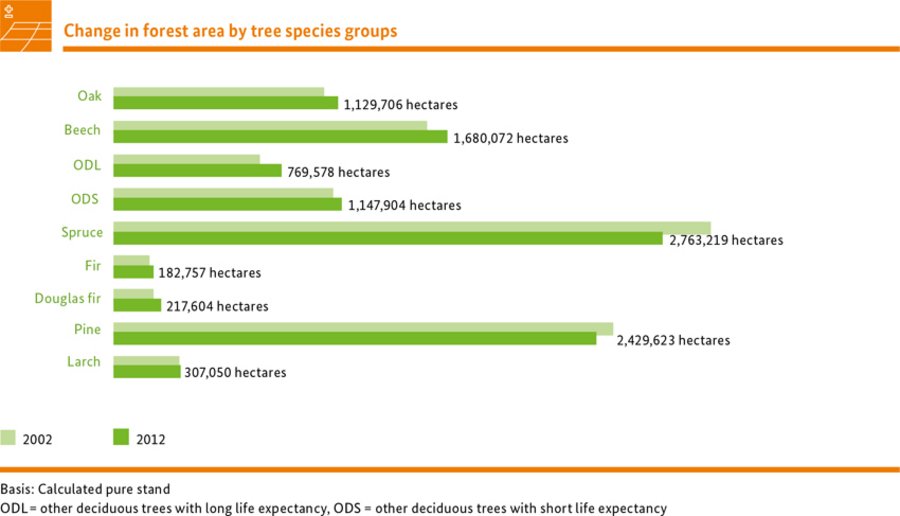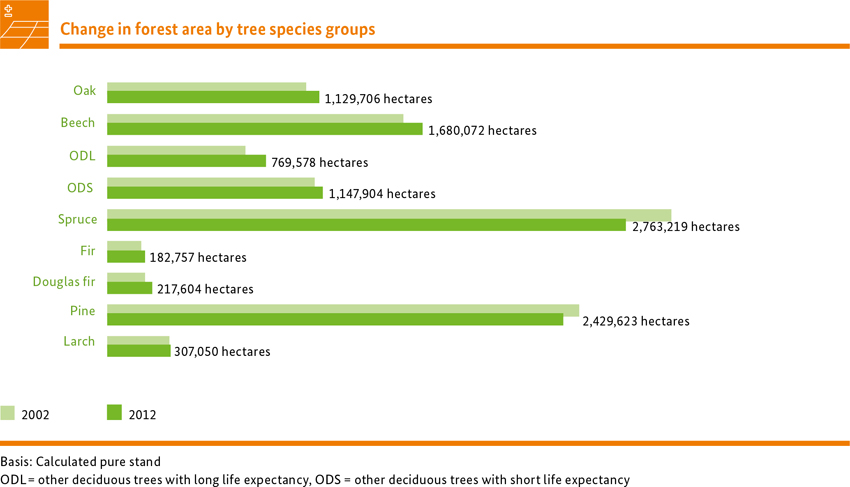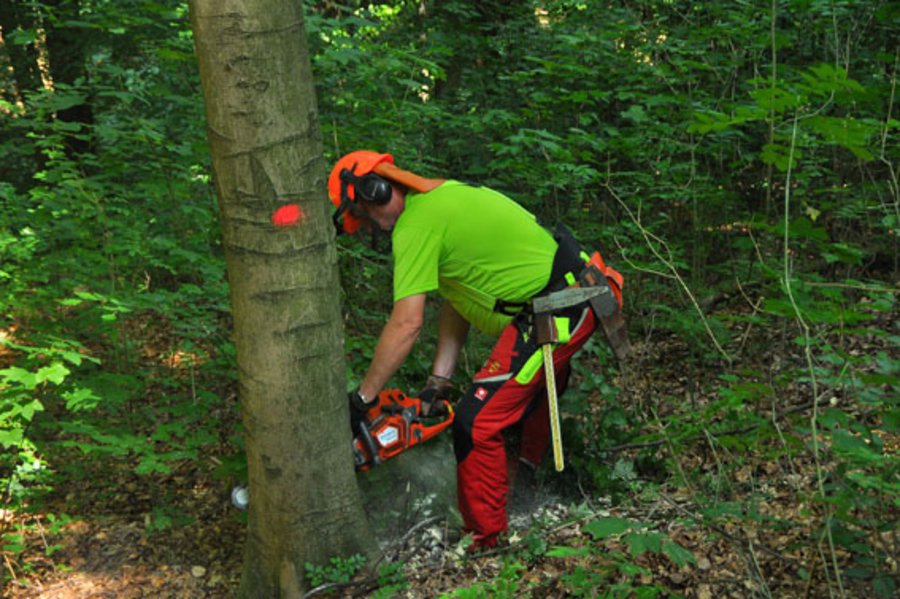The Federal government and Länder have already made considerable investments in order to bring about the forest transformation documented here. In the meantime, many forest owners have practiced ecologically compatible forestry for many decades. With targeted management, they cultivate stabile and ecologically valuable mixed stands with a high share of site-suitable native tree species.
The results of the National Forest Inventory substantiate the success of these measures: Between 2002 and 2012 the area of spruces dropped by 242,000 hectares (-8 %) and the beech area rose by 102,000 hectares (6 %). Already between 1987 and 2002 the spruce area in former West Germany had been lowered by 219,000 hectares (-8 %) and the beech area increased by 151,000 hectares (12 %). This development was intensified further by storm events and drought years.
In addition to the beech, the forest owners also expanded the area percentage of other deciduous tree species. Among the conifers, only the Douglas fir increased slightly by approx. 35,000 hectares or 19 % and the fir by a little under 19,000 hectares or 11 %, while the pine decreased by approx. 85,000 hectares or 3 %. The decline in pines is particularly noticeable in the younger age classes.
Forests are long-lasting ecosystems that develop over decades and centuries. Forestry planning and production periods are correspondingly long. It is therefore natural that spruces and pines – in spite of the development leading to more deciduous trees – will initially remain the two dominant tree species.




